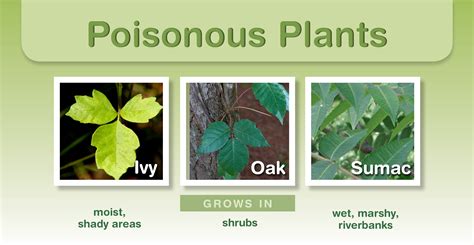
Highly toxic hogweed, a plant known for causing severe skin burns and blisters, is rapidly spreading across the United States, prompting urgent warnings from experts to avoid contact.
Giant hogweed (Heracleum mantegazzianum), dubbed “Plant H” by some due to its hazardous properties, poses a significant public health risk. Contact with its sap can cause phytophotodermatitis, a condition where the skin becomes extremely sensitive to sunlight, leading to painful blisters, severe burns, and potential long-term scarring. Experts are urging the public to learn how to identify the plant and report any sightings to local authorities. The plant, native to the Caucasus region of Eurasia, has been identified in several states, including Maine, Michigan, New York, Pennsylvania, and Washington, raising concerns about its continued spread and impact on both human health and the environment.
The Threat of Giant Hogweed
Giant hogweed is a formidable plant, often reaching heights of up to 14 feet. Its size and distinctive appearance, characterized by large, umbrella-like flower clusters and deeply incised leaves, make it somewhat identifiable, though caution is paramount. The clear, watery sap within the plant contains furocoumarins, chemicals that cause phytophotodermatitis. When this sap comes into contact with human skin and is exposed to sunlight, it triggers a severe reaction.
“The reaction can begin as early as 15 minutes after contact, with redness and itching developing,” explains Dr. Emily Carter, a botanist specializing in invasive species. “Within 48 hours, painful blisters will form, and these can leave dark scars that may persist for months or even years.” The severity of the reaction depends on the amount of sap that comes into contact with the skin and the duration of sun exposure. Children and outdoor workers are particularly vulnerable.
Identification and Habitat
Accurate identification is crucial for avoiding contact with giant hogweed. The plant typically grows in moist, disturbed areas, such as roadsides, riverbanks, and vacant lots. Key identifying features include:
- Height: Reaching up to 14 feet tall.
- Stems: Thick, green stems with purple blotches and coarse white hairs.
- Leaves: Large, deeply lobed leaves that can span up to 5 feet wide.
- Flowers: White, umbrella-shaped flower clusters that can be up to 2.5 feet in diameter.
Distinguishing giant hogweed from similar-looking plants, such as cow parsnip and Queen Anne’s lace, can be challenging. Cow parsnip is smaller, typically reaching only 6 feet in height, and its leaves are less deeply lobed. Queen Anne’s lace has a smaller flower head with a single, dark purple flower in the center.
The plant’s adaptability and prolific seed production contribute to its rapid spread. Each plant can produce thousands of seeds, which are easily dispersed by wind, water, and human activity. “The seeds can remain viable in the soil for several years, making eradication efforts particularly difficult,” notes Dr. Carter.
Geographic Distribution and Spread
Giant hogweed is not native to the United States. It was introduced from Eurasia, likely as an ornamental plant, and has since spread aggressively. The plant has been confirmed in several states, including:
- Northeastern States: Maine, New York, Pennsylvania
- Midwestern States: Michigan
- Pacific Northwest: Washington
- Other States: Isolated populations have been reported in other states, highlighting the potential for further spread.
The plant’s ability to thrive in a variety of habitats and climates makes it a significant threat to both natural ecosystems and human health. Its presence can disrupt native plant communities, reduce biodiversity, and increase the risk of soil erosion.
Health Risks and Treatment
Contact with giant hogweed sap poses serious health risks. Phytophotodermatitis can cause:
- Severe Burns: Exposure to sunlight after contact with the sap can cause painful burns and blisters.
- Long-Term Scarring: The burns can leave dark scars that may persist for months or years.
- Eye Irritation and Blindness: Contact with the eyes can cause severe irritation and, in some cases, permanent blindness.
If you come into contact with giant hogweed sap, immediate action is crucial:
- Wash the Affected Area: Immediately wash the affected area with soap and water.
- Avoid Sunlight: Keep the affected area covered and out of direct sunlight for at least 48 hours.
- Seek Medical Attention: If redness, itching, or blisters develop, seek medical attention immediately. A doctor may prescribe topical steroids or other medications to alleviate symptoms.
“Early intervention is key to minimizing the severity of the reaction,” advises Dr. Carter. “If you suspect you have come into contact with giant hogweed, don’t hesitate to seek medical advice.”
Eradication and Control Measures
Eradicating giant hogweed is a challenging but necessary task. Control measures typically involve a combination of methods:
- Manual Removal: Cutting the plant at the root, ideally before it produces seeds, can be effective for small infestations. However, this must be done with extreme caution, wearing protective clothing, including gloves, long sleeves, and eye protection.
- Herbicide Application: Herbicides can be used to kill the plant, but careful application is necessary to avoid harming other vegetation.
- Public Awareness Campaigns: Educating the public about the dangers of giant hogweed and how to identify and report it is crucial for preventing its spread.
Several states and local organizations have implemented programs to control giant hogweed. These programs often involve surveying for and mapping infestations, providing assistance to landowners for eradication efforts, and conducting public outreach.
Environmental Impact
The environmental impact of giant hogweed extends beyond its direct effects on human health. As an invasive species, it can outcompete native plants, reducing biodiversity and disrupting ecosystem functions. Its large size and dense growth can also shade out other vegetation, altering habitat structure and affecting wildlife populations.
In riparian areas, giant hogweed can contribute to soil erosion. Its shallow root system does not provide adequate soil stabilization, making riverbanks and streambanks more vulnerable to erosion during periods of high water flow. This can lead to increased sedimentation in waterways, which can negatively impact aquatic life.
Economic Costs
The spread of giant hogweed also carries economic costs. These costs include:
- Medical Expenses: Treating phytophotodermatitis can be expensive, especially in severe cases requiring hospitalization.
- Eradication Efforts: Controlling giant hogweed infestations requires significant resources, including labor, equipment, and herbicides.
- Agricultural Losses: In agricultural areas, giant hogweed can reduce crop yields and increase production costs.
- Recreational Impacts: The presence of giant hogweed can limit recreational opportunities in parks and natural areas, reducing tourism revenue.
The Role of Government Agencies
Government agencies at the federal, state, and local levels play a crucial role in managing giant hogweed. The U.S. Department of Agriculture (USDA) provides guidance and resources for controlling invasive species, including giant hogweed. State departments of agriculture and environmental protection agencies are responsible for implementing control programs and providing assistance to landowners.
Local governments also play a key role in managing giant hogweed on public lands and enforcing regulations related to invasive species. Public awareness campaigns and educational programs are essential for informing the public about the risks of giant hogweed and how to report sightings.
The Future of Giant Hogweed Management
Effective management of giant hogweed requires a coordinated, long-term approach. This includes:
- Prevention: Preventing the introduction and spread of giant hogweed is the most cost-effective strategy. This involves strict regulations on the importation and sale of ornamental plants and public education campaigns to discourage the planting of invasive species.
- Early Detection and Rapid Response: Early detection of new infestations is crucial for preventing the plant from becoming established. Rapid response efforts, such as manual removal or herbicide application, can be effective in controlling small infestations.
- Integrated Pest Management: Integrated pest management (IPM) involves using a combination of control methods to minimize the impact on the environment and human health. This may include manual removal, herbicide application, and biological control.
- Research: Continued research is needed to develop more effective control methods and to better understand the ecology and spread of giant hogweed.
Community Involvement
Community involvement is essential for successful giant hogweed management. Landowners, volunteers, and local organizations can play a key role in surveying for and reporting infestations, assisting with eradication efforts, and educating others about the dangers of giant hogweed.
Citizen science initiatives, where members of the public collect and report data on plant distributions, can provide valuable information for tracking the spread of giant hogweed and identifying areas where control efforts are needed.
Global Perspective
Giant hogweed is not just a problem in the United States. It is also a significant invasive species in Europe, Canada, and other parts of the world. International cooperation is needed to share information and best practices for managing giant hogweed.
The European and Mediterranean Plant Protection Organisation (EPPO) has developed guidelines for the management of giant hogweed, which provide valuable information for countries around the world.
Long-Term Outlook
The long-term outlook for giant hogweed management is uncertain. While control efforts have been successful in some areas, the plant continues to spread in others. Climate change may exacerbate the problem by creating more favorable conditions for giant hogweed growth and spread.
Continued vigilance and a sustained commitment to management efforts are essential for minimizing the impact of giant hogweed on human health and the environment.
Frequently Asked Questions (FAQ)
-
What is giant hogweed?
Giant hogweed (Heracleum mantegazzianum) is a highly invasive plant species native to the Caucasus region of Eurasia. It is known for its large size, reaching up to 14 feet tall, and its sap, which contains chemicals that can cause severe skin burns and blisters when exposed to sunlight.
-
How can I identify giant hogweed?
Giant hogweed can be identified by its height (up to 14 feet), thick green stems with purple blotches and coarse white hairs, large deeply lobed leaves (up to 5 feet wide), and white umbrella-shaped flower clusters (up to 2.5 feet in diameter).
-
What should I do if I come into contact with giant hogweed sap?
If you come into contact with giant hogweed sap, immediately wash the affected area with soap and water. Keep the area covered and out of direct sunlight for at least 48 hours. Seek medical attention if redness, itching, or blisters develop.
-
Where is giant hogweed found in the United States?
Giant hogweed has been confirmed in several states, including Maine, New York, Pennsylvania, Michigan, and Washington. Isolated populations have been reported in other states, highlighting the potential for further spread.
-
How can I report a giant hogweed sighting?
You can report a giant hogweed sighting to your local department of agriculture, environmental protection agency, or cooperative extension office. Providing details about the location and size of the infestation will help officials track and manage the plant.
-
What are the symptoms of giant hogweed exposure?
Symptoms of giant hogweed exposure include redness, itching, and the development of painful blisters within 48 hours of contact with the sap and exposure to sunlight. The blisters can leave dark scars that may persist for months or years. Eye contact can cause severe irritation and potentially blindness.
-
How long does it take for giant hogweed burns to heal?
The healing time for giant hogweed burns varies depending on the severity of the reaction. Mild cases may heal within a few weeks, while more severe cases can take months to heal and may leave permanent scarring.
-
Is giant hogweed poisonous to animals?
While giant hogweed primarily poses a threat to humans, its sap can also cause skin irritation in animals. It is best to keep pets and livestock away from the plant.
-
What kind of protective gear should I wear when removing giant hogweed?
When removing giant hogweed, wear protective clothing, including waterproof gloves, long sleeves, long pants, and eye protection. A face shield or mask is recommended to prevent sap from splashing onto your face.
-
How can I prevent giant hogweed from growing on my property?
Regularly inspect your property for giant hogweed and remove any plants you find before they have a chance to produce seeds. Be sure to wear protective clothing and follow proper removal techniques.
-
What are the ecological impacts of giant hogweed?
Giant hogweed can outcompete native plants, reduce biodiversity, and disrupt ecosystem functions. Its large size and dense growth can also shade out other vegetation, altering habitat structure and affecting wildlife populations. In riparian areas, it can contribute to soil erosion.
-
Are there any look-alike plants that are commonly mistaken for giant hogweed?
Yes, cow parsnip and Queen Anne’s lace are commonly mistaken for giant hogweed. Cow parsnip is smaller and has less deeply lobed leaves. Queen Anne’s lace has a smaller flower head with a single, dark purple flower in the center.
-
What herbicides are effective for controlling giant hogweed?
Glyphosate and triclopyr are commonly used herbicides for controlling giant hogweed. However, it is important to follow the manufacturer’s instructions and apply the herbicide carefully to avoid harming other vegetation. Consult with a local extension agent or pest control professional for specific recommendations.
-
What is the best time of year to remove giant hogweed?
The best time of year to remove giant hogweed is before it produces seeds, typically in the spring or early summer. Cutting the plant at the root below the soil surface is the most effective method.
-
Are there any natural predators or biological controls for giant hogweed?
Currently, there are no widely available biological controls for giant hogweed in the United States. Research is ongoing to identify potential natural predators or pathogens that could be used to control the plant.
-
How long can giant hogweed seeds remain viable in the soil?
Giant hogweed seeds can remain viable in the soil for several years, making eradication efforts particularly difficult. Regular monitoring and removal of new seedlings are essential for preventing re-establishment.
-
What role do government agencies play in managing giant hogweed?
Government agencies at the federal, state, and local levels provide guidance and resources for controlling invasive species, implement control programs, provide assistance to landowners, and conduct public awareness campaigns.
-
How can I get involved in giant hogweed management efforts in my community?
Contact your local department of agriculture, environmental protection agency, or cooperative extension office to learn about volunteer opportunities and citizen science initiatives related to giant hogweed management.
-
What is phytophotodermatitis?
Phytophotodermatitis is a skin reaction caused by contact with certain plant chemicals (furocoumarins) followed by exposure to sunlight. Giant hogweed sap contains furocoumarins that can cause severe phytophotodermatitis.
-
Does the severity of the reaction to giant hogweed vary from person to person?
Yes, the severity of the reaction to giant hogweed sap can vary depending on individual sensitivity, the amount of sap that comes into contact with the skin, and the duration of sun exposure. Children and people with sensitive skin may be more vulnerable to severe reactions.
-
How does climate change affect the spread of giant hogweed?
Climate change may create more favorable conditions for giant hogweed growth and spread, potentially exacerbating the problem. Warmer temperatures and changes in precipitation patterns could allow the plant to expand its range into new areas.
-
What are the long-term economic costs associated with giant hogweed infestations?
The long-term economic costs associated with giant hogweed infestations include medical expenses for treating phytophotodermatitis, costs associated with eradication efforts, agricultural losses, and recreational impacts.
-
Are there any regulations regarding the sale or distribution of giant hogweed?
Some states have regulations prohibiting the sale or distribution of giant hogweed. Check with your local department of agriculture or environmental protection agency for specific regulations in your area.
-
Can giant hogweed sap cause blindness?
Yes, contact with giant hogweed sap can cause severe eye irritation and, in some cases, permanent blindness. It is crucial to protect your eyes when working near giant hogweed.
-
What are some of the best practices for preventing the spread of giant hogweed?
Best practices for preventing the spread of giant hogweed include preventing the introduction and spread of the plant, early detection and rapid response to new infestations, integrated pest management techniques, and continued research to develop more effective control methods. Community involvement and public awareness are also essential for successful management.









